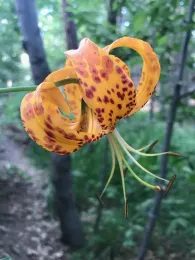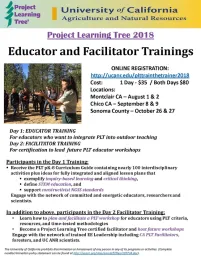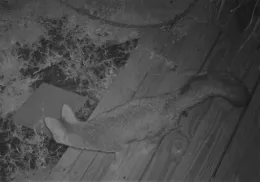
An interesting audio discussion about the increase in hobbyist drone use, how drone users may be inadvertently stressing out wildlife, and how drone enthusiasts can avoid wildlife harassment. The interview starts at 4:05.
What do you think about the proposition of reintroducing grizzlies to California, Naturalists? Here's a well-researched article on the subject in Pacific Standard. "One of the reasons you have predators coming back to Europe—wolves, bears, lynx, and wolverines—is partly because Europe has become more urbanized, and parts of the countryside are emptying out. You also have a change in thinking and attitudes. People are imagining different futures, which is also vitally important" says Dr. Peter Alagona, UC Santa Barbara Professor, author of the book "After the Grizzly: Endangered Species and the Politics of Place in California," and member of the interdisciplinary California Grizzly Study Group.
We wish our partners and naturalists at Tuleyome the best! CAL FIRE crews have made significant progress containing the County Fire, which has burned more than 90,000 acres, including ~10,500 acres of BLM-managed public land, primarily within the Berryessa Snow Mountain Friends of the BSM National Monument. Tuleyome is a Woodland-based conservation organization who, in 2015, along with coalition partners, were successful in permanently protecting the Berryessa Snow Mountain region as a National Monument. They have been heavily impacted by wildfire for several years in a row. Join Tuleyome on June 28 for their "Nature and You" lecture series to learn about the recent wildfires and their effects on the environment.

The Sierra Nevada region covers only a quarter of the state's land area yet provides 60% of California's fresh water. Carried across the state, this water serves 23 million people in communities in the mountains, valleys, and as far as coastal cities of San Francisco, Los Angeles, and San Diego.
As climate change continues to warm the atmosphere, what will become of the frozen reservoir we depend on? To investigate,UCLA's Center for Climate Science created high-resolution projections of future climate in the Sierra. The article highlights critical findings and contains a link to the full report.



Enjoy nocturnal wildlife? So many interesting animals are active at night, making it hard to see much more than their scat or prints left behind! Historically used for wildlife research management and behavioral research, trail cameras offer a fun, relatively passive way to find out what wildlife inhabits your yard. Issues with first generation cameras (loud noises and flash) are addressed by most cameras now, to minimize disturbance and behavior changes. They have decreased substantially in price (starting at about $60) in recent years and are increasingly loaded with optional features like video/stills, longer detection range, waterproof casing, cellular or WiFi capability, time lapse, internal viewers and more. Many comparative reviews of features exist online and there is a growing trail cam community on iNaturalist.org that shares observations. Be sure to choose a no-glow or low-glow infrared camera (vs incandescent) for the least amount of disturbance to wildlife.
Check out Urban Ark, an interesting environmental stories series on KCET in collaboration with UCLA Laboratory for Environmental Narrative Strategies. "A documentary exploring intriguing questions about human-created urban ecosystems, biodiversity and opportunities for creating sanctuaries for endangered species, including the origin and relocation of the beloved red-crowned parrot in Pasadena."


